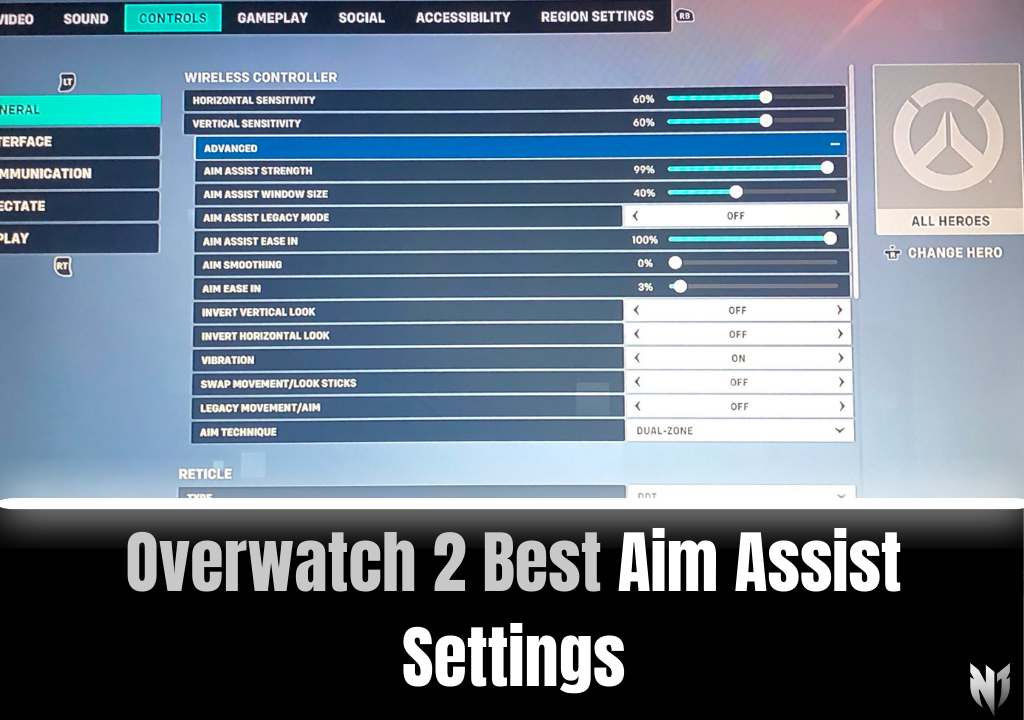

What many Overwatch 2 players don't know is that there's a degree of aim assistance in this game that you can toggle on or off from the game settings. However, have you ever wondered how the various aim assist settings affect the player? Whether or not they even help us land our shots?
There are four main aim assist settings in Overwatch 2. Aim Assist Strength determines the intensity of the Aim Assist feature in Overwatch 2, and the Aim Assist Window Size setting determines the area around the target where the aim assist is active. Aim Assist Ease In controls how smoothly the aim assist strength increases as your crosshair approaches the target. Finally, Aim Smoothing determines the level of responsiveness and smoothness in transitioning from your manual aiming to the aim assisted one.
We'll be going through all four of the aim assist settings in Overwatch 2 and explaining just what it is they do.
The first aim assist related setting in Overwatch 2 that you can adjust to your liking is aim assist strength. This setting determines the intensity of the aim assist feature in Overwatch 2 and can be enabled to help your crosshair track enemies and more frequently land shots. Naturally, the aim assist only kicks in when your crosshair is already close to the enemy, so don't worry about it working like an aim bot.
Now, you can adjust this setting so that you receive more or less assistance from this feature, but it's also a bit of a gamble that depends on your personal play style and comfort. If the setting is bumped up, then you'll receive more assistance, and is recommended for players who want to get more frequent eliminations without caring about what tools they use.
On the contrary, if you change this setting's values to be lower, then chances are you're a player that likes to depend on their own personal skill and values their freedom when playing. After all, Overwatch 2's aim assist feature can very easily ruin the flow of the match by forcefully adjusting your crosshair even when you don't want it to.
Aim Assist Window Size pretty much determines how close to the enemy your crosshair has to be for aim assist to kick in. The higher the values you give to this specific setting, the wider the aim assist window size will be, and the quicker aim assist will start adjusting your aim.
While increasing the value will help you track targets more effectively, lowering it will let you land more precise shots such as headshots. Pair lower values with the best Overwatch 2 settings for a controller and you can potentially dominate the map with frequent and accurate shots. Therefore, we recommend you decide what's more important to you before making any adjustments.
The third aim assist setting in Overwatch 2 is a very important one. Basically, you know how when you enter the aim assist window, the aim assist kicks in and you have less freedom to control the crosshair yourself? Well, this setting determines how smooth the transition from manual to aim assist is.
If you increase the value, there will be a much smoother transition. However, it'll also mean that there might be a slight delay in aim movement while the transition is happening. Meanwhile, you can decrease the value to have a snappy transition, but it has the potential to give you a quicker increase in aim strength. You should be able to counter heroes like Tracer more easily with a snappier aim assist.
Finally, the last aim assist setting in Overwatch 2 determines the level of responsiveness and smoothness in translating your physical aim movement to in game movement. Now, what does this mean? Well, it basically means the higher the value is the smoother the aim assist feature will be. However, it also means the aim assist won't be as snappy as some people may like.
If you want a snappier and more accurate aiming experience and don't mind sacrificing some smoothness, then we recommend you lower the Aim Smoothing value. This setting is basically comfort versus potential eliminations, and what you prioritize completely depends on you.
Professional boosting with No Cheats, 100% Refund Guarantee, and Trusted Boosters.